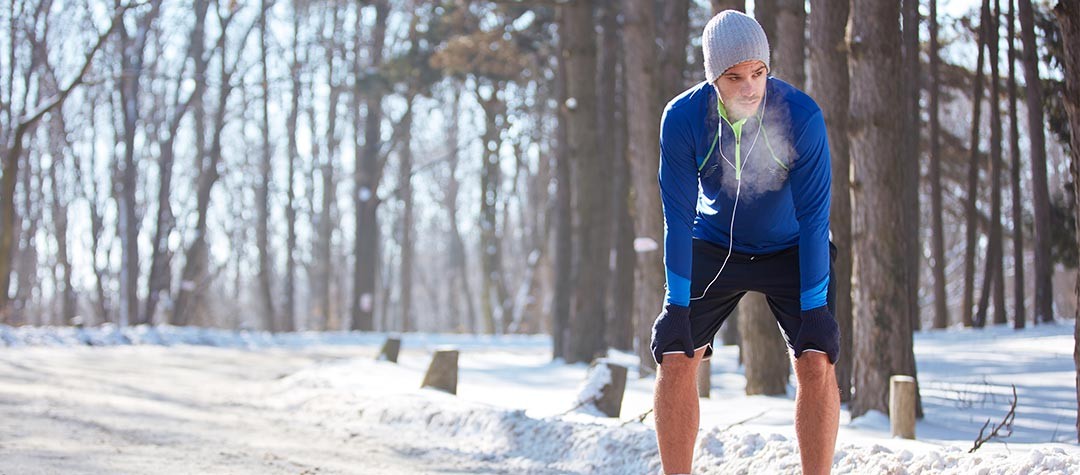Cold weather and everything it brings can put many runners off from training when the temperature drops. But if you’re prepared for the cold then it doesn’t have to be as bad as you fear. Here’s everything you need to know to stay safe when training in cold weather.
Take your warm up seriously
It will take your muscles longer to warm up in the cold weather, so it’s important that you take some time to prepare your body for exercise. When you’re cold, your muscles will be stiff and more susceptible to injury. A good warm up when the temperature drops should consist of a slow jog (or brisk walk) for around 10 minutes to raise your core body temperature and increase blood flow. Then complete some dynamic stretching such as leg swings and lunges to prepare your muscles for running.
Cold weather affects your breathing
It’s not just your muscles that can be affected by low temperatures, it can make breathing during your training harder as well. For many, especially people with asthma, training in cold or damp conditions can trigger symptoms such as coughing, wheezing, shortness of breath and tightness in the chest. But the cold weather doesn’t have to stop you from running. Before you go out, wrap a scarf loosely over your nose and mouth – when you breathe through a scarf, it warms the air up and therefore prevents the cold air irritating your airways.
Layer up
Layers are key when running in the cold weather. Just remember that your body temperature will quickly increase when you start running, so bear this in mind when you’re initially wrapping up to leave the house. The layer you wear closest to your skin needs to be made from a breathable, moisture-wicking material that will allow sweat to escape but keep valuable heat in. Your outer layer should be waterproof and windproof to protect you from cold weather elements.
Another thing to remember is that in cold weather, blood flow is directed away from the surface of the skin and towards your vital internal organs. This, therefore, leaves extremities such as your hands exposed and more vulnerable to the cold weather, which is why you should wear gloves to protect them. Also, make sure your clothing has reflective qualities to keep you safe when running in low light conditions .
Hydration is still important
Just as hydration is a vital consideration in hot temperatures, it’s just as important that you stay well hydrated when running in the cold weather. Your body will still be sweating when the weather is cold and therefore it’s important that you replace these lost fluids. So what should you be drinking? As a general rule, if you’re exercising for longer than 90 minutes, you should be using an electrolyte mix to replenish lost fluids.
Head off-road
You might think that running on the roads is the safest place to avoid slippery ice but heading off-road could actually be a better option. In winter, the roads often have a lot of standing water on them and this leads to dangerous ice patches, whereas running on grass is not as slippery. Plus, grass will be a bit of a softer landing if you do fall over. Make sure you wear trail shoes if you do find yourself heading off-road when the cold weather hits.
When it comes to training in the cold weather, the most important thing to remember is to be sensible. If the weather is really bad, you should be flexible with your training schedule and train indoors if you need to. You could always hit the treadmill or take the opportunity to try some different cross-training activities.

.png)




-min.jpg)

